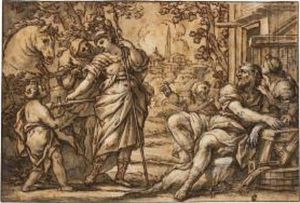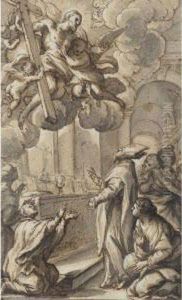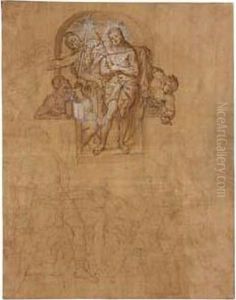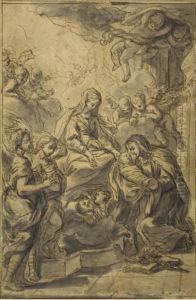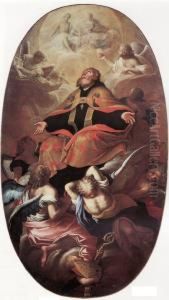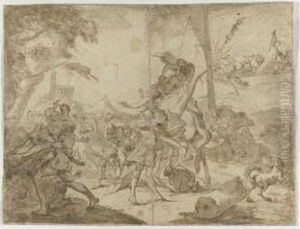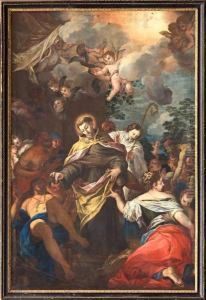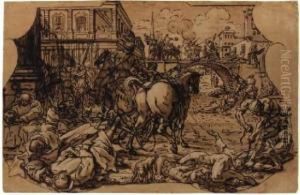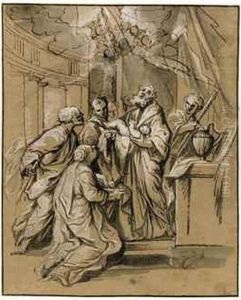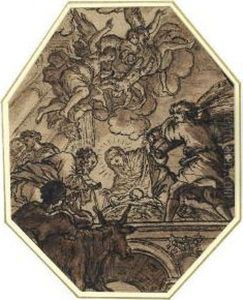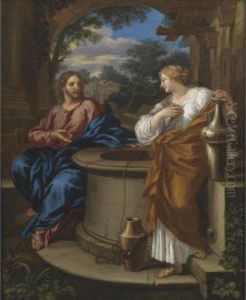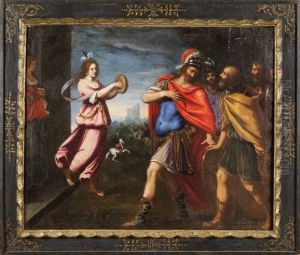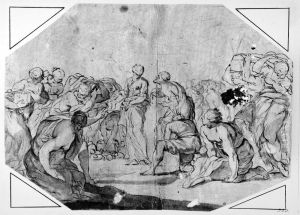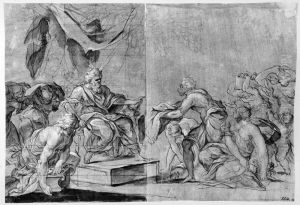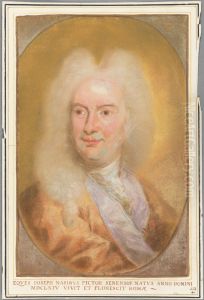Giuseppe Nicola Nasini Paintings
Giuseppe Nicola Nasini was an Italian painter of the Baroque period, born in Montepulciano, Tuscany, in the year 1657. He showed an inclination towards art from a young age and was initially trained by his father, the painter Antonio Nasini. Giuseppe later moved to Rome, where he studied under the guidance of renowned artists Giovanni Maria Morandi and Carlo Maratta, two influential figures in the Roman art scene of the late 17th century.
Nasini's style was deeply influenced by the Baroque sensibilities of drama, movement, and vivid coloration. He became known for his frescoes and his ability to blend naturalism with the ornate and expressive characteristics of the High Baroque. After completing his training, Nasini returned to Tuscany, where he contributed significantly to the artistic landscape of the region.
Throughout his career, Nasini worked on several important commissions, contributing to the decoration of various churches and public buildings. He enjoyed patronage from ecclesiastical and noble figures of the time, which allowed him to work on a range of projects, from religious narratives to mythological scenes.
Among his notable works are the frescoes in the dome of the Chiesa del Gesù in Pistoia and the ceiling of the Palazzo Pubblico in Siena. Nasini's artistry was also expressed through his teaching; he educated numerous students, including his own son, Apollonio Nasini, who followed in his footsteps to become a painter.
Giuseppe Nicola Nasini's contribution to the Baroque art of Tuscany and central Italy has been recognized by art historians, although he may not be as widely known as some of his contemporaries. He passed away in Siena in the year 1736, leaving behind a legacy of work that embodies the grandeur and dynamism of the Baroque era.
